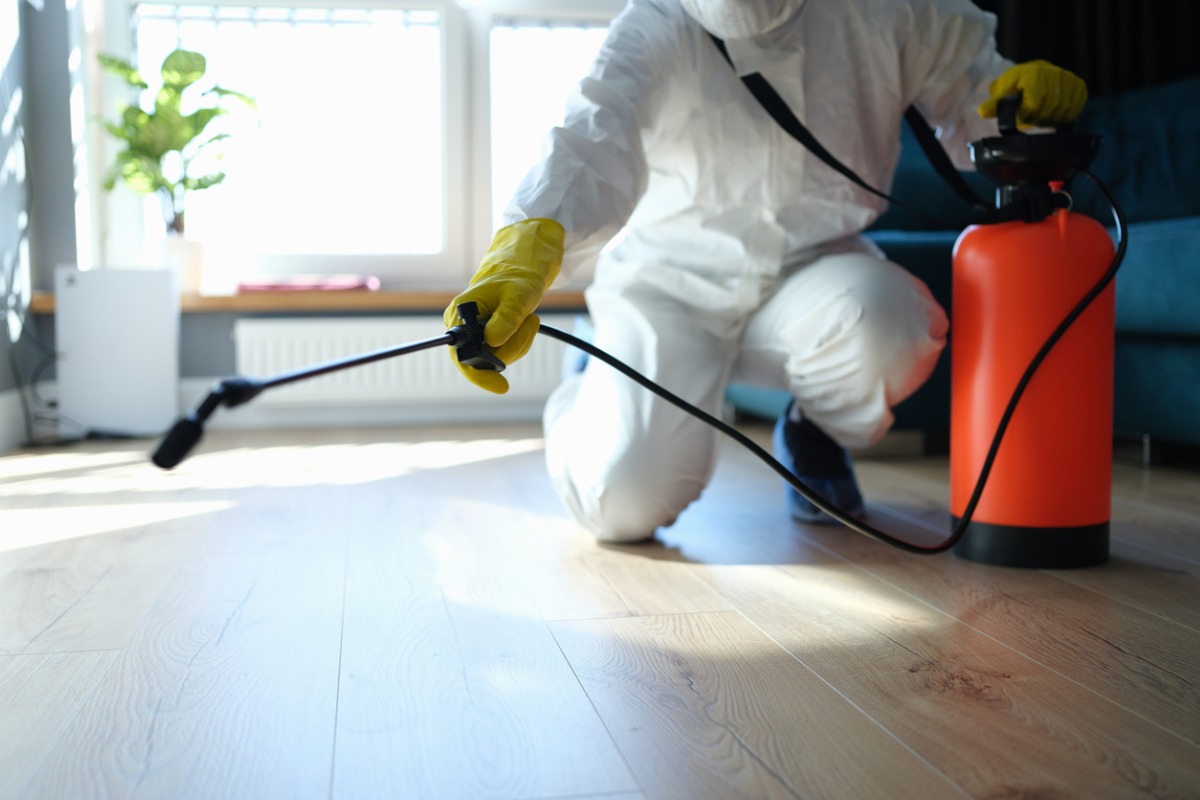Reliable Pest Control to remove insects and mice effectively.
Eco-Friendly Pest Control Approaches for Managing Wild Animals in Urban Locations
Urban locations commonly discover themselves at the crossway of human activity and wild animals, leading to one-of-a-kind obstacles in bug administration. These methods not only safeguard the atmosphere however additionally improve neighborhood engagement in wild animals administration. As metropolitan populations continue to expand, comprehending the dynamics of wild animals communications comes to be progressively vital.
Comprehending Urban Wildlife Characteristics
Recognizing Urban Wildlife Characteristics is crucial for establishing effective and environmentally friendly pest control strategies. Urban areas are progressively becoming environments for various wild animals species, driven by elements such as habitat fragmentation, food accessibility, and human encroachment. Identifying these dynamics enables a nuanced method to pest management that straightens with ecological concepts.
Urban wildlife commonly includes types such as raccoons, squirrels, and birds, which adjust to city atmospheres, locating specific niches in environment-friendly areas, parks, and even houses. Their visibility can result in problems with humans, especially when they exploit human resources for food and shelter. Recognizing the actions and ecological duties of these varieties notifies strategies that lessen adverse interactions while promoting biodiversity.
Furthermore, recognizing the interdependencies within urban environments aids in identifying important locations for environment conservation and reconstruction. This knowledge contributes to the advancement of incorporated parasite monitoring (IPM) techniques that think about the eco-friendly equilibrium, therefore reducing reliance on unsafe chemicals. By fostering coexistence between people and metropolitan wild animals, cities can produce much healthier environments that benefit both locals and local communities, leading the way for sustainable metropolitan living.
Natural Repellents and Deterrents
Natural repellents and deterrents use a lasting option to traditional pest control methods by utilizing the power of nature to keep unwanted species at bay. These green solutions usually make use of plant-based active ingredients, essential oils, and various other normally happening compounds that prevent insects without hurting the environment.
One reliable all-natural repellent is peppermint oil, which is understood to repel rats and pests. Its solid scent is unpleasant to lots of insects, making it a popular choice for city setups. Likewise, vinegar and citrus peels can serve as deterrents, as their strong odors are typically uninviting to different wildlife.
In addition, diatomaceous earth is a natural powder that can be spread in areas vulnerable to insect task, properly drying out and deterring insects without posing threats to non-target types. Furthermore, garlic sprays and neem oil are identified for their capacity to drive away a large range of parasites, including both pests and larger wildlife.
Executing these all-natural repellents not only decreases dependence on chemical pesticides yet additionally promotes a much healthier urban environment, fostering a more well balanced conjunction between people and wild animals. By utilizing these methods, city locations can effectively manage bug populaces while minimizing environmental effect.
Environment Modification Methods
Reliable environment modification techniques play a vital duty in sustainable bug monitoring by altering the environment to make it less favorable to pest problems. By recognizing the ecological dynamics of metropolitan locations, homeowner can carry out critical modifications that discourage insects while promoting biodiversity.
(Home pest control Port Charlotte)One primary method involves maintaining proper cleanliness. This includes routine waste elimination, securing trash can, and removing standing water to reduce breeding sites for insects and rodents. Furthermore, landscaping methods such as choosing native plants can improve environmental balance, giving environments for beneficial organisms while minimizing resources for pests.
One more essential approach is to secure entrance points in structures. Examining and repairing splits important source in structures, walls, and home windows can substantially decrease parasite gain access to. Producing physical barriers, such as fencings or plant buffers, can prevent wild animals motion into human-inhabited locations.
Integrated Pest Monitoring Practices
Building upon environment alteration methods, integrated bug management (IPM) techniques offer an all natural approach to regulating insect populaces while minimizing ecological impact. IPM integrates various techniques, consisting of biological, social, mechanical, and chemical controls, to achieve efficient parasite management.
Biological control entails the introduction of all-natural killers or parasites to minimize parasite populaces. Social methods, such as plant rotation and cleanliness, interfere with pest life process and decrease their habitats - Pest Control. Mechanical controls, like catches and obstacles, offer instant alleviation from pest stress without chemical intervention
Chemical controls are used as a last hotel, concentrating on targeted applications that restrict injury to non-target varieties and the setting. The choice of ecologically pleasant chemicals, when necessary, is essential to the IPM framework. Furthermore, keeping an eye on pest populations and evaluating prospective damage helps notify decision-making, guaranteeing that treatments are prompt and reliable.
Area Participation and Education And Learning

(Pest Control PortCharlotte)Workshops and informative sessions can equip citizens with knowledge regarding native types, habitat preservation, and efficient non-toxic pest management methods. Collaboration with colleges, regional organizations, and federal government companies even more boosts educational outreach, guaranteeing that important information reaches varied audiences.
In addition, community-led initiatives, such as area clean-up days and habitat restoration jobs, not only promote biodiversity but additionally enhance community connections. Pest Control. By encouraging citizens to share their experiences and observations, communities can create targeted strategies that attend to certain regional pest problems
Integrating comments from homeowners into bug monitoring prepares allows a more responsive and flexible strategy to wild animals challenges. Eventually, informed and engaged areas are essential to achieving long-lasting success in green parasite control, resulting in healthier city atmospheres that appreciate both human and ecological demands.

Conclusion
Finally, environmentally friendly insect control approaches offer lasting services for taking care of urban wild animals. By focusing on environment adjustment, using natural repellents, and executing integrated insect administration techniques, communities can promote a harmonious conjunction with regional fauna. Involving residents with education improves awareness and urges liable wild animals communications. Eventually, these strategies not only safeguard biodiversity but also promote environmental wellness, ensuring metropolitan areas stay dynamic environments where people and wildlife thrive with each other.